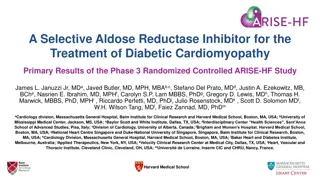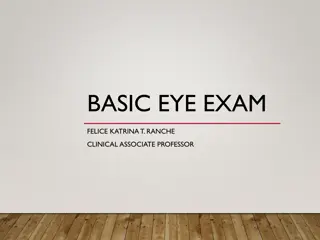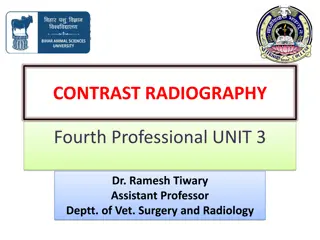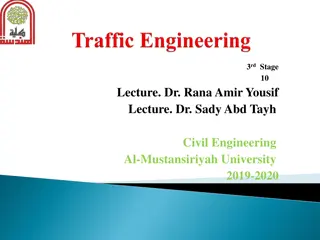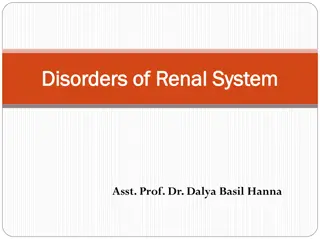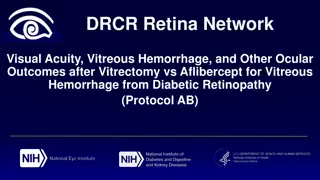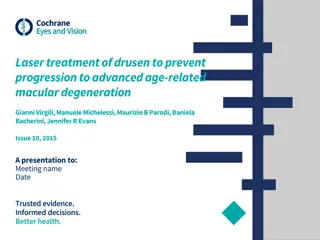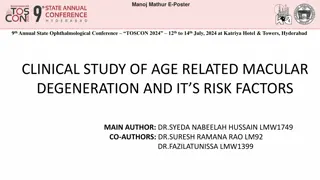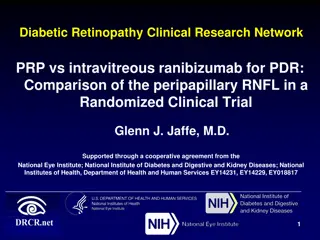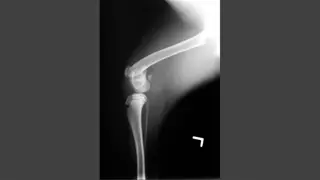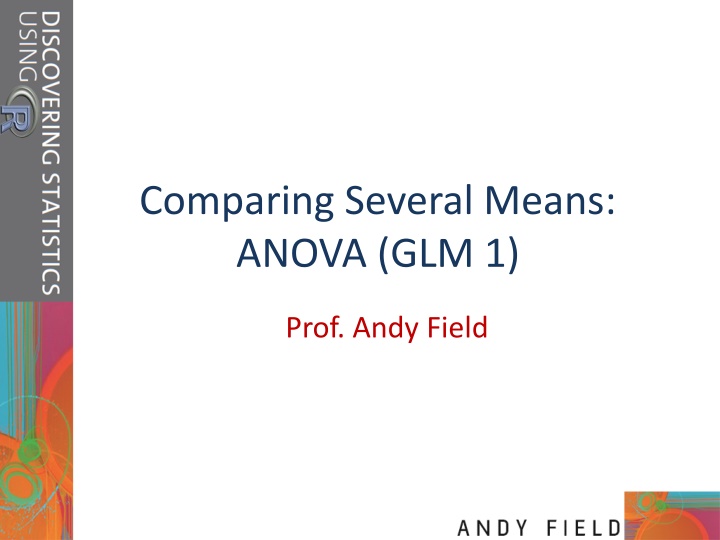
Effect of Initial Treatments on Low-Contrast Visual Acuity in Diabetic Macular Edema
The study explores the impact of aflibercept, laser, or observation as initial treatments on low-contrast visual acuity in eyes with diabetic macular edema and good vision. Results from randomized clinical trials and contrast sensitivity in diabetic macular edema are also discussed.
Download Presentation

Please find below an Image/Link to download the presentation.
The content on the website is provided AS IS for your information and personal use only. It may not be sold, licensed, or shared on other websites without obtaining consent from the author. If you encounter any issues during the download, it is possible that the publisher has removed the file from their server.
You are allowed to download the files provided on this website for personal or commercial use, subject to the condition that they are used lawfully. All files are the property of their respective owners.
The content on the website is provided AS IS for your information and personal use only. It may not be sold, licensed, or shared on other websites without obtaining consent from the author.
E N D
Presentation Transcript
Comparing Several Means: ANOVA (GLM 1) Prof. Andy Field
Aims Understand the basic principles of ANOVA Why it is done? What it tells us? Theory of one-way independent ANOVA Following up an ANOVA: Planned contrasts/comparisons Choosing contrasts Coding contrasts Post hoc tests Slide 2
When and Why When we want to compare means we can use a t- test. This test has limitations: You can compare only 2 means: often we would like to compare means from 3 or more groups. It can be used only with one predictor/independent variable. ANOVA Compares several means. Can be used when you have manipulated more than one independent variable. It is an extension of regression (the general linear model). Slide 3
Why Not Use Lots of t-Tests? If we want to compare several means why don t we compare pairs of means with t-tests? Can t look at several independent variables. Inflates the Type I error rate. 1 2 1 1 Vs Vs Vs 3 2 2 3 3 1 0.95n = familywise error Slide 4
What Does ANOVA Tell Us? Null hyothesis: Like a t-test, ANOVA tests the null hypothesis that the means are the same. Experimental hypothesis: The means differ. ANOVA is an omnibus test It test for an overall difference between groups. It tells us that the group means are different. It doesn t tell us exactly which means differ. Slide 5
ANOVA as Regression ( outcome i = ) + model error i = + + + libido high low b b b 0 2 1 i i i i
Placebo Group = + + + libido high low b b b 0 2 1 i i i i ( ) ( + ) = = = + libido libido X 0 0 b b b b 0 2 1 i 0 i b placebo 0
High Dose Group = + ( 0 2 b b b b = + b b X = + + + libido high low b b b 0 2 1 i i + i i ) ( 1 ) = + libido libido libidoi X 0 b 1 i 0 2 i = + 0 2 b high = placebo 2 b X X 2 high placebo
Low Dose Group = + ( 0 2 b b b b = + libidoi b X X = + + libido libido libido high ) ( 0 low b b b 1 0 + 2 1 ) i i b i i = + 1 i 0 1 i = + b 0 1 + b Low b placebo 1 = X X 1 low placebo
Experiments vs. Correlation ANOVA in regression: Used to assess whether the regression model is good at predicting an outcome. ANOVA in experiments: Used to see whether experimental manipulations lead to differences in performance on an outcome (DV). By manipulating a predictor variable can we cause (and therefore predict) a change in behaviour? Asking the same question, but in experiments we systematically manipulate the predictor, in regression we don t. Slide 11
Theory of ANOVA We calculate how much variability there is between scores Total sum of squares (SST). We then calculate how much of this variability can be explained by the model we fit to the data How much variability is due to the experimental manipulation, model sum of squares (SSM)... and how much cannot be explained How much variability is due to individual differences in performance, residual sum of squares (SSR). Slide 12
Rationale to Experiments Group 1 Group 2 Lecturing Skills Variance created by our manipulation Removal of brain (systematic variance) Variance created by unknown factors E.g. differences in ability (unsystematic variance) Slide 13
Population No Experiment = 10 10 8 M = 10 M = 9 6 4 M = 11 M = 10 2 M = 9 M = 8 M = 12 0 M = 11 M = 10 Experiment 10 Mean = 10 SD = 1.22 4 8 6 3 Frequency 4 2 2 1 0 0 6 7 8 9 10 11 12 13 14 Sample Mean
Theory of ANOVA We compare the amount of variability explained by the model (experiment), to the error in the model (individual differences) This ratio is called the F-ratio. If the model explains a lot more variability than it can t explain, then the experimental manipulation has had a significant effect on the outcome (DV). Slide 15
Theory of ANOVA If the experiment is successful, then the model will explain more variance than it can t SSM will be greater than SSR Slide 16
ANOVA by Hand Testing the effects of Viagra on libido using three groups: Placebo (sugar pill) Low dose viagra High dose viagra The outcome/dependent variable (DV) was an objective measure of libido. Slide 17
The Data Slide 18
Total Sum of Squares (SST): 8 7 6 5 4 Grand Mean 3 2 1 0 0 1 2 3 4 Slide 20
Step 1: Calculate SST = 2 SS ( ) ix grand x = 2 s SS N T 1 ( ) ( ) = 2 grand s SS 1 = N 2 SS 1 s N T ( ) = = SS 3.124 15 1 43.74 T Slide 21
Degrees of Freedom Degrees of freedom (df) are the number of values that are free to vary. Think about rugby teams! In general, the df are one less than the number of values used to calculate the SS. = 1 15 1 14 = = df N T Slide 22
Model Sum of Squares (SSM): 8 7 6 5 4 Grand Mean 3 2 1 0 0 1 2 3 4 Slide 23
Step 2: Calculate SSM = 2 SS ( ) n x grand x M i i ( ( ) ( ) ( ) 2 2 2 = 5 2.2 3.467 + 5 3.2 3.467 + 5 5.0 3.467 SS M ) ( ) ( ) 2 2 2 = = = 1.267 + + 0.267 + 5 8.025 0.355 11.755 20.135 5 + 5 1.533 Slide 24
Model Degrees of Freedom How many values did we use to calculate SSM? We used the 3 means. = 1 3 1 = = 2 df k M Slide 25
Residual Sum of Squares (SSR): 8 7 6 5 4 Grand Mean 3 2 1 0 0 1 2 3 4 Df = 4 Df = 4 Df = 4 Slide 26
Step 3: Calculate SSR ( ) i i x x = 2 SS R = 2 s SS N 1 ( ) ( ) = 2 = 2 i SS 1 s N SS 1 s n R i ( ) ( ) ( ) = + + 2 group1 s 2 group2 s 2 group3 s SS 1 1 1 n n n R 1 2 3 Slide 27
Step 3: Calculate SSR ( ) ( ) ( ) ) = = = = = + + + 2 group1 1.70 5 1 2 group2 s 2 group3 s SS 1 + 1 1 s n n n R 1 2 3 ( ) + ( ) ( 1.70 5 1 1.70 5 1 ( 6.8 6.8 10 23.60 ) ( + ) ( + ) 1.70 4 + 1.70 4 2.50 4 Slide 28
Residual Degrees of Freedom How many values did we use to calculate SSR? We used the 5 scores for each of the SS for each group. = + = + = + = + df df df df + R group1 n group2 n group3 n ( ( 12 ) ( ) ( ) ( ) ( + ) 1 1 1 1 2 3 ) 5 1 5 1 5 1 Slide 29
Double Check SS SS 43.74 20.14 23.60 43.74 43.74 = = = + SS + T M R = + df df df T M R 2 12 = + 14 14 14 = Slide 30
Step 4: Calculate the Mean Squared Error SS df 20.135 2 = = = MS 10.067 M M M SS df 23.60 12 = = = MS 1.967 R R R Slide 31
Step 5: Calculate the F-Ratio MS MS F = M R MS MS 10.067 1.967 F = = = 5.12 M R Slide 32
Step 6: Construct a Summary Table Source SS df MS F Model 20.14 2 10.067 5.12* Residual 23.60 12 1.967 Total 43.74 14 Slide 33
Why Use Follow-Up Tests? The F-ratio tells us only that the experiment was successful i.e. group means were different It does not tell us specifically which group means differ from which. We need additional tests to find out where the group differences lie. Slide 34
How? Multiple t-tests We saw earlier that this is a bad idea Orthogonal contrasts/comparisons Hypothesis driven Planned a priori Post hoc tests Not planned (no hypothesis) Compare all pairs of means Trend analysis Slide 35
Planned Contrasts Basic idea: The variability explained by the model (experimental manipulation, SSM) is due toparticipants being assigned to different groups. This variability can be broken down further to test specific hypotheses about which groups might differ. We break down the variance according to hypotheses made a priori (before the experiment). It s like cutting up a cake (yum yum!) Slide 36
Rules When Choosing Contrasts Independent Contrasts must not interfere with each other (they must test unique hypotheses). Only two chunks Each contrast should compare only two chunks of variation (why?). K 1 You should always end up with one less contrast than the number of groups. Slide 37
Generating Hypotheses Example: Testing the effects of Viagra on libido using three groups: Placebo (sugar pill) Low dose viagra High dose viagra Dependent variable (DV) was an objective measure of libido. Intuitively, what might we expect to happen? Slide 38
Placebo Low Dose High Dose 3 5 7 2 2 4 1 4 5 1 2 3 4 3 6 Mean 2.20 3.20 5.00 Slide 39
How do I Choose Contrasts? Big hint: In most experiments we usually have one or more control groups. The logic of control groups dictates that we expect them to be different from groups that we ve manipulated. The first contrast will always be to compare any control groups (chunk 1) with any experimental conditions (chunk 2). Slide 40
Hypotheses Hypothesis 1: People who take Viagra will have a higher libido than those who don t. placebo (low, high) Hypothesis 2: People taking a high dose of Viagra will have a greater libido than those taking a low dose. low high Slide 41
Planned Comparisons Slide 42
Coding Planned Contrasts: Rules Rule 1 Groups coded with positive weights compared to groups coded with negative weights. Rule 2 The sum of weights for a comparison should be zero. Rule 3 If a group is not involved in a comparison, assign it a weight of zero. Slide 45
Coding Planned Contrasts: Rules Rule 4 For a given contrast, the weights assigned to the group(s) in one chunk of variation should be equal to the number of groups in the opposite chunk of variation. Rule 5 If a group is singled out in a comparison, then that group should not be used in any subsequent contrasts. Slide 46
One-Way ANOVA Using R Commander

